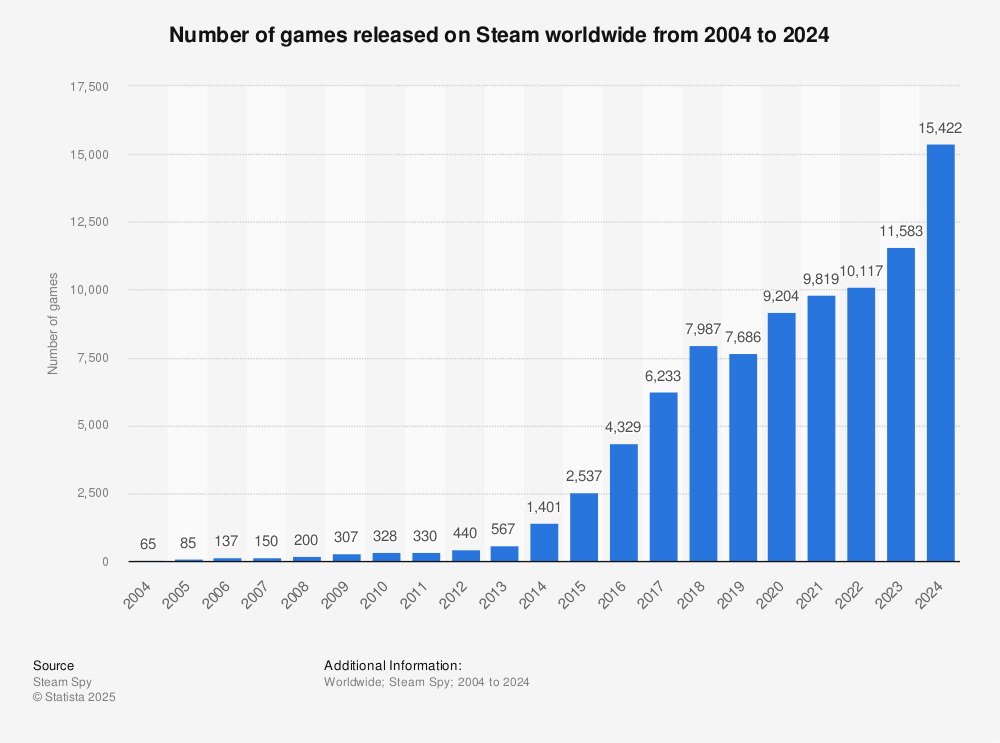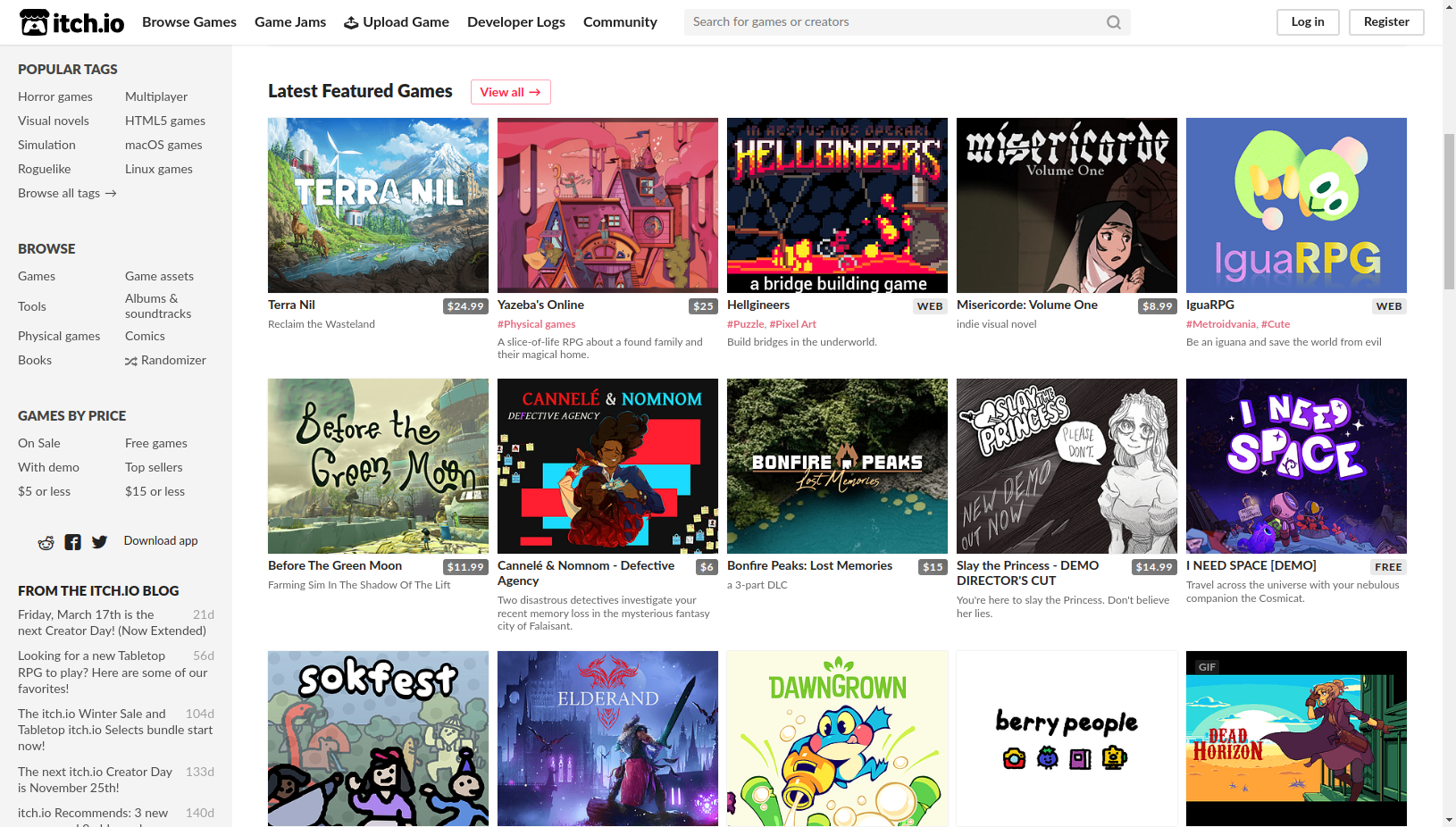Why Steam Isn't a Marketing Solution and How to Succeed with Your Game Release
Piotr Korzuszek
04 April 2023
General
Introduction
In this blog post, we’ll discuss the common misconception that releasing a game on Steam automatically leads to success and why it’s crucial for game developers to focus on marketing their games.
The Myth of Steam as a Marketing Solution
While Steam is a well-known platform, it is not a replacement for marketing. Simply releasing a game on Steam does not guarantee success. Many developers mistakenly believe that getting their game on Steam will ensure visibility and sales, but this is far from the truth.
The Importance of Marketing for Game Developers
In the competitive gaming market, developers must actively promote their games to stand out and reach their target audience. Marketing is an essential part of the game development process, and it can make the difference between a game’s success and failure.
Why Releasing a Game on Steam Isn’t Enough
There are several reasons why releasing a game on Steam alone is not enough to guarantee success. These factors contribute to the challenges developers face when trying to make their games stand out on the platform:
1. Oversaturation of the Platform

Find more statistics at Statista
With thousands of games being released on Steam every year, the platform has become increasingly oversaturated. As a result, the competition for visibility and attention on the platform is fierce, making it difficult for individual games to stand out. New games can quickly become lost in the sea of releases, reducing the chances of discovery by potential players.
2. Limited Visibility and Discoverability
Due to the sheer number of games on Steam, visibility and discoverability are significant challenges for developers. Steam’s algorithms favor games with high engagement, sales, and positive reviews. Without an existing audience or marketing push, it can be hard for new games to gain traction and be featured in the platform’s recommendation sections. This limited visibility directly impacts the potential for organic growth and sales.
3. Lack of Customization and Control
On Steam, developers have limited customization options and control over their game’s presentation. This can make it difficult to create a unique and engaging experience for potential players. Moreover, pricing and promotional decisions are often influenced by Steam’s policies and guidelines, which can restrict developers’ flexibility in marketing their games.
4. Revenue Sharing
Steam takes a significant cut of the revenue generated by game sales, typically around 30%. This can be a considerable disadvantage for smaller developers who could benefit from retaining a larger portion of their earnings. Alternative distribution methods may offer more favorable revenue sharing terms, allowing developers to keep more of their hard-earned money.
Considering these challenges, it becomes clear that relying solely on Steam for game distribution and marketing is not enough to guarantee success. Developers must explore alternative strategies to promote their games and reach their target audience effectively.
Alternative Distribution Methods
1. Self-publishing
Self-publishing allows developers to have complete control over their game’s marketing, pricing, and distribution. This option can be more challenging, as developers must manage every aspect of their game’s release, but it also offers more freedom and potential for success.
2. Third-Party Platforms
There are many alternative platforms to Steam, such as itch.io, GOG, and Humble Bundle. These platforms can offer unique benefits and cater to different types of players and genres.
3. Game Launcher Services with CDN Network Distribution
Using a game launcher service with a CDN network distribution, like PatchKit, can help developers reach their target audience more effectively. These services can offer developers more control over their game’s distribution, marketing, and community engagement.
How to Succeed in Marketing Your Game
1. Building a Strong Online Presence
Creating a strong online presence through social media, a game website, and regular updates can help developers connect with their audience and build anticipation for their game.
2. Engaging with Your Community
Interacting with your community through forums, social media, and events can help you gather valuable feedback and create a loyal player base.
3. Creating and Sharing Valuable Content
Sharing engaging content, such as devlogs, gameplay videos, and behind-the-scenes insights, can help attract attention to your game and keep your audience interested.
4. Utilizing Influencers and Media Coverage
Reaching out to influencers, streamers, and gaming journalists can help increase your game’s visibility and attract new players.
Conclusion
Releasing a game on Steam is not enough to ensure success. Game developers must focus on marketing and consider alternative distribution methods to make their games stand out in the crowded market. By building a strong online presence, engaging with your community, creating valuable content, and utilizing influencers and media coverage, you can increase your game’s visibility and success. Remember, choosing the right distribution method, whether it’s self-publishing, using third-party platforms, or a game launcher service with CDN network distribution, can greatly impact your game’s performance. Stay positive, be creative with your marketing efforts, and your game will have a better chance of reaching its full potential.
Additional Resources
- Steam Direct - Official documentation for publishing on Steam.
- IndieDB - A platform for indie game developers to showcase their games and connect with the community.
- PixelProspector - A valuable resource for indie game developers, including marketing guides and tips.
- Game Dev Underground - A community-driven platform offering resources, articles, and support for indie game developers.
- Gamasutra - An industry-leading website featuring news, articles, and resources for game developers.
- 5 Key Areas of Discoverability for Indie Devs Part 1 - An in-depth guide to marketing indie games.

